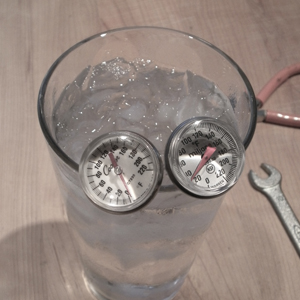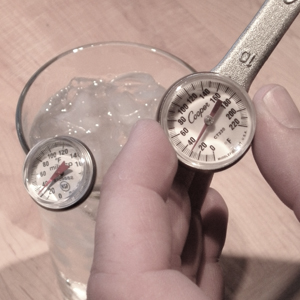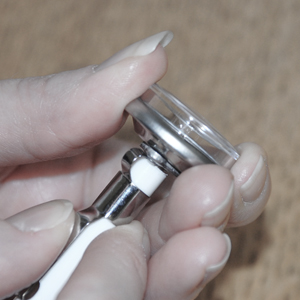What is a probe thermometer and why should we use it?
A probe thermometer is a thermometer that has a pointy metal stem that can be inserted into food. Using a probe thermometer helps to make sure the proper internal food temperatures are reached and maintained so you don’t risk being sick with a food-borne illness.
You can use a probe thermometer to check internal food temperatures when you cook, reheat, cool, thaw and while keeping foods hot or cold.
Are there different types of probe thermometers?
Yes, there are different types of probe thermometers that you can buy. Some are safe to use in an oven while others are not. Some provide instant digital readings while others use a dial to show the readings. Make sure you read the manufacturer’s instructions on how to use their thermometers.
Although infrared thermometers (laser thermometers) are convenient to use when checking ambient air temperature of a fridge, they are not effective when checking internal food temperatures as the infrared light does not penetrate the food.
Tip: Unless the thermometer is oven safe, never leave the thermometer in food that’s being cooked in an oven or on a stove.
How do you clean and sanitize a probe thermometer?
Probe thermometers can be first cleaned with soap and water followed by rinsing and sanitizing. To sanitize, you can use alcohol swabs or a sanitizing solution. To prepare a sanitizing solution, mix a 1/2 tsp of unscented bleach with 1 L (4 cups) of water. Sanitizing the probe thermometer will help you avoid cross-contamination.
How do you use a probe thermometer?
- Insert the stem of a probe thermometer into the thickest part of the food, or in the centre of the food if the food is even in thickness.
- If the food is liquid (e.g., stew or soup) stir it to make sure the heat has been evenly distributed before inserting the thermometer in order to get an accurate temperature reading.
- Wait at least 15 seconds for the reading to steady and then record the reading.
Tip: Don’t let the probe touch the bottom or sides of the food containers, because you won’t get an accurate temperature of your food.
Why should a probe thermometer be calibrated regularly?
“Calibrating” means to adjust the thermometer to make sure it’s reading the correct temperature. You need to calibrate your thermometer regularly to make sure your temperature readings are accurate.
How often should a probe thermometer be calibrated?
A thermometer should be calibrated:
- Before first use
- At least once a month
- When the thermometer is exposed to extreme change in temperature during storage
- If the probe thermometer has been dropped
How do you calibrate a probe thermometer?
Use the ice point method to calibrate your probe thermometer as it’s safe and easy to use. The temperature of the ice water will always be 0°C (32°F). This is the temperature that you use as a guide to calibrate your probe thermometer.

Step 1: Fill a cup with crushed ice and add just enough water to barely float the ice.

Step 2: Place the stem of the thermometer in the ice and water mixture, making sure the stem doesn’t touch the sides or the bottom of the cup. Wait until the reading is steady (stops moving).

Step 3: Read the temperature. If the thermometer is not reading at 0°C (32°F), adjust the thermometer in the ice water. If your thermometer has a calibration nut, use a small wrench or other tool and turn the nut until the temperature reads 0°C (32°F).
Tip: When adjusting the thermometer, keep the probe in the ice water to make sure the temperature is accurate.
Keep in mind not all probe thermometers can be calibrated. For example, all dial type thermometers can be calibrated however not all digital thermometers can be calibrated. Read the manufacturer’s instruction to find out if your digital thermometer can be calibrated.
If you have any questions, feel free to contact us at 519-258-2146 ext. 4475.

